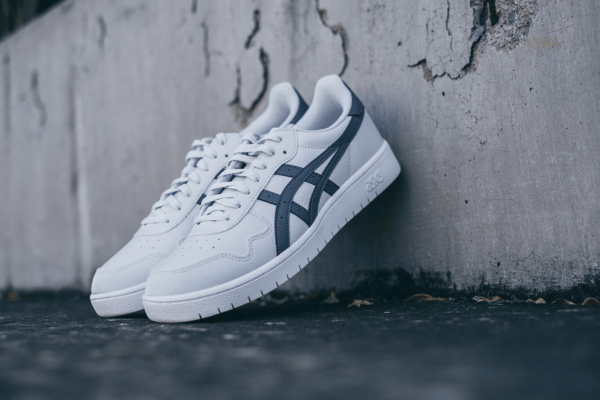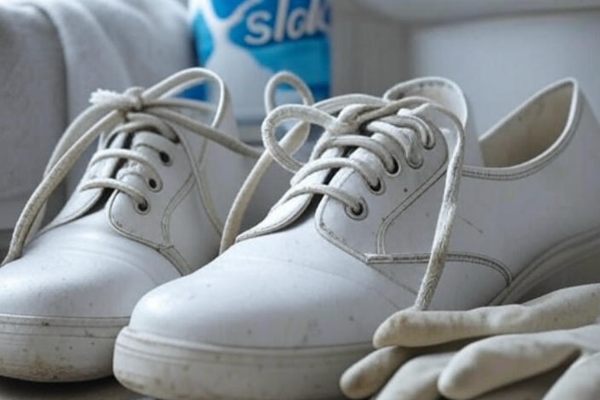1. Introduction
Do your shoes squeeze or press uncomfortably on the sides? Are your feet wide and uncomfortable in most sneakers or running shoes? You’re not alone. Many people have wide feet and struggle to find the right fit. But here’s the good news—the way you lace your shoes can make a big difference!
In this guide, we’ll show you how to lace shoes for wide feet to make them more comfortable, reduce tightness, and help your feet feel great all day. Whether you’re wearing sneakers, sports shoes, or everyday trainers, these smart lacing tips will give your feet the extra space they need.
We’ll also share tricks like lacing every other eyelet, using the side-thread method, and choosing flexible laces—all designed to relieve pressure and avoid foot pain. Let’s make your shoes fit better, feel better, and support your wide feet the way they should.
2. Why Proper Lacing Matters for Wide Feet
For people with wide feet, how you lace your shoes can make a big difference. The right lacing method can relieve pressure points, stop tight spots, and help your shoes feel much more comfortable.
When shoes are too tight, they can cause blisters, hot spots, or even pain. But when shoes are too loose, your feet can slide around—and that’s not good either. That’s why finding the perfect balance between a snug fit and flexibility is so important.
Choosing the right lacing method helps your feet feel freer, with extra space to move and breathe comfortably. You can try flexible lacing for wide feet, like skipping eyelets or using special patterns to create more space where you need it. These smart lacing tricks help you stay comfortable all day long—whether you’re walking, running, or just hanging out.
So, don’t just tie your shoes any way—lace them the right way, and your wide feet will thank you!
3. Key Tips Before You Start Lacing
Before you learn how to lace shoes for wide feet, it’s important to start with the basics. These simple tips will help your shoes feel better, fit better, and stay more comfortable all day.
1. Make Sure Your Shoes Fit Properly
If your shoes are too small, no lacing trick will help. Make sure to pick shoes that match the true size of your feet. Walk around before buying to make sure they feel good.
2. Don’t Tie Laces Too Tightly
Tight laces can cut off blood flow and make your feet go numb. To avoid pain or pressure, tie your laces just snug enough to hold the shoe—not too tight.
3. Loosen Tight Shoes with Lacing Techniques
If your shoes feel tight across the top or sides, special lacing methods can help. Select techniques that give your toes more wiggle room and reduce tightness over the foot. That’s a smart way to fix tight shoes for wide feet without buying new ones.
4. Try Soft or Stretchy Shoelaces
Switching to soft or stretchy laces can make a big difference. They move with your foot, reduce pressure, and give you a more comfortable fit—especially helpful if you have wide feet.
5. Consider Wide-Width Shoes if Needed
Sometimes, the best fix is switching to wider-width shoes. Your feet stay cooler and more comfortable, thanks to the improved ventilation and optimized lacing.
Quick Reminder:
Getting the basics right makes every lacing technique work better. Whether you’re using criss-cross, side-thread, or skip-eyelet styles, these tips help make any method more comfortable and supportive—especially when learning how to lace shoes for wide feet.
4. Best Lacing Techniques for Wide Feet
Lacing your shoes the right way can help your wide feet feel more comfortable, supported, and less squished. Below are some of the best lacing tricks for wide shoes that reduce pressure and help your shoes fit better.
1. Standard Lacing Method for Wide Feet
This is the simplest and most common way to lace your shoes for a better fit. Helps in minimizing strain by evenly dispersing pressure across the foot.
Step-by-step:
- Start lacing from the bottom eyelets as usual.
- Crisscross the laces at every eyelet as you move toward the top.
- Don’t pull too tight—leave some space for your foot to relax.
Why it helps:
This method gently widens tight shoes with lacing, giving your feet more room to move.
2. Side-Thread Lacing Technique
This is perfect if you have a wide forefoot or shoes that feel too tight around the toes.
How to do it:
- Lace your shoes as usual up to the point where your foot is the broadest.
- Instead of crossing the laces, thread them straight up through the next eyelets.
- Continue crisscrossing after that.
Why it helps:
It creates extra space in the toe box and reduces pressure at the front of the foot.
3. Lacing Every Other Eyelet
This trick is great if your shoes feel tight all over or if your feet swell during the day.
How to do it:
- Skip one eyelet each time you move the lace up.
- You can skip one on each side or just in the middle where it feels tight.
Why it helps:
It helps make narrow shoes fit wide feet by loosening the fit and improving airflow.
5. Lacing by Shoe Type
Different shoes need different tricks. Here’s how to lace popular shoe styles if you have wide feet.
1. How to Lace Running Shoes for Wide Feet
Running shoes often feel tight because they hug the foot for support. Use this method to give your feet more space without losing stability.
Tips:
- Use the standard wide foot method or try heel-lock lacing if your shoes slip.
- Choose stretchy laces for comfort during long runs.
- Ensure your lacing technique leaves enough room in the toe box area.
Why it helps:
It improves shock absorption and keeps your foot stable while giving your toes room to breathe.
Struggling with tight shoes? Learn how to lace shoes for wide feet using proven techniques for comfort and pressure relief. Visit bestshoelaces.com for step-by-step guides, visuals, and expert tips!
2. How to Lace Sneakers for Wide Feet
Sneakers are more casual, but they can still feel tight if you have wide feet.
Tips:
- Lace through alternate eyelets to give your feet more breathing space.
- Try side-thread lacing for pressure-free zones.
- Use flat or elastic laces for extra comfort.
Why it helps:
Sneakers become more flexible, and you avoid that “squeezed” feeling.
Final Tip:
If your shoes are still tight after lacing, try using wider laces or look for shoes made in wide sizes. Even minor tweaks in your lacing style can create a major impact.
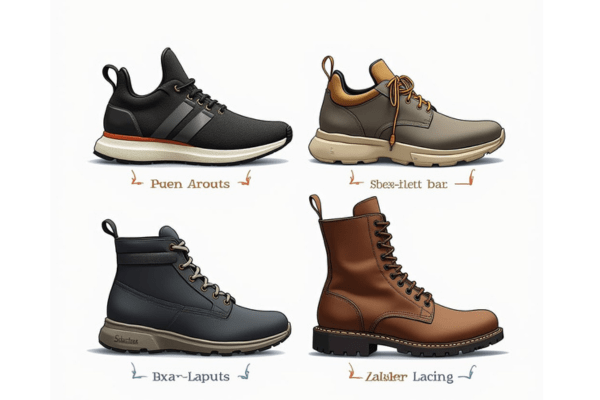
6. Make Narrow Shoes Comfortable for Wide Feet
If you’ve got wide feet, squeezing into narrow shoes can be uncomfortable and even painful. But with the right lacing techniques, you can ease the pressure and make your shoes fit better and feel more supportive.
Try Supportive Lacing for Foot Width
Use special lacing styles like the custom fit lacing pattern or skip-eyelet lacing to give your foot extra space. These patterns loosen tight areas and help the shoe stretch across the widest part of your foot.
Use Lace Extenders or Wider Laces
Lace extenders are small add-ons that give you more length and room. You can also try wider laces, which spread tension more evenly and improve overall comfort.
Adjust Laces for Wide Foot Comfort
The way you tie your shoes for wide feet really matters. Start loose around the toe box and tighten gradually toward the ankle. This creates a better fit without squeezing your foot.
Still Too Tight? Try These Add-ons
If lacing isn’t enough, try using
- Soft insoles for added space
- Shoe stretchers to gently widen your shoes
- Wide-fit shoe options for a more natural shape
Tip: Every foot is different. Keep adjusting until your shoes feel just right—not too loose, not too tight. Smart lacing can turn tight shoes into a custom comfort fit!
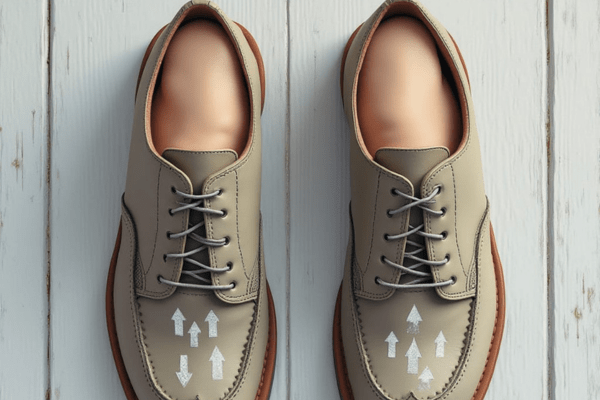
7. Extra Comfort Tips for Wide Feet: Laces That Make a Big Difference
If you have wide feet, the kind of shoelaces you use can make a huge difference in comfort and fit. The wrong laces can feel tight and painful—but the right ones? They can help your shoes feel just right all day long.
Here are some wide-foot shoe-lacing tips to help you get the perfect fit:
Choose the Right Lace Material
- Flat laces are better than round laces for wide feet because they spread out pressure and don’t dig into your skin.
- Elastic laces give your feet more space to move. They stretch with every step and are great for extra comfort.
- Avoid stiff cotton laces if they make your shoes feel tight.
Try No-Tie or Custom-Length Laces.
If tying laces is a struggle or your shoes feel too snug, try
- No-tie elastic laces—great for easy slip-on comfort.
- Custom-length laces—cut them to fit your shoes perfectly, especially if your feet are wider than average.
These are smart wide-foot shoe hacks that save time and give your feet room to breathe.
Use Heel-Lock Lacing to Stop Slipping
Wide feet sometimes make your heels slip out of the back of your shoes. A heel-lock lacing pattern holds your foot in place and stops that annoying movement.
It’s a great custom fit lacing pattern that adds both support and comfort—especially for running or walking shoes.
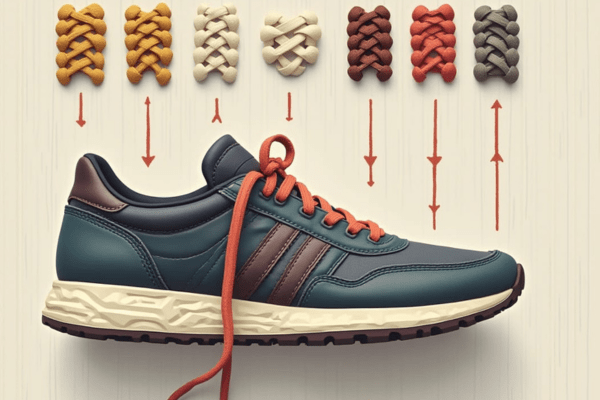
8. Common Lacing Mistakes That Hurt Wide Feet (And How to Avoid Them)
Getting the right fit is not just about choosing wide shoes—it’s also about lacing them the right way. Many people make simple mistakes that can cause pain, pressure, or discomfort, especially if you have wide feet. Here’s what to avoid:
Mistake #1: Over-Tightening the Middle of the Shoe
Pulling your laces too tight across the middle of your foot can cut off circulation and create pressure points. Instead, try gentle lacing methods that enhance flexibility for wider feet and give your foot room to move naturally.
Mistake #2: Ignoring Hot Spots and Pain
If you feel rubbing or pain while walking, don’t ignore it. These are signs that your shoes or laces need adjusting. Try new lacing patterns designed to improve shoe comfort by relieving pressure across your foot.
Mistake #3: Using Poor-Quality Laces
Thin or stiff laces don’t stretch or move with your foot, especially if it’s wide. Upgrade to soft, stretchy, or flat laces that help you get a better fit and longer-lasting comfort.
Mistake #4: Wearing Shoes That Are Too Narrow
Even the best lacing techniques can’t fix shoes that are too small. For wide feet, always choose shoes with enough space and pair them with proper lacing techniques. Learning how to lace shoes for wide feet can help adjust tight areas and reduce discomfort.
By avoiding these common mistakes, you can give your feet the space and support they need. The right lacing method doesn’t just help your shoes fit better—it can enhance flexibility, prevent foot pain, and improve overall shoe comfort.
9. Final Thoughts—Find Your Perfect Lacing Style
Choosing the right way to lace your shoes can make a big difference—especially if you have wide feet. The ideal way to lace your shoes varies based on your footwear style, how you use them daily, and the unique structure of your feet.
Don’t be afraid to try different lacing styles like side-thread lacing or skip-eyelet patterns. These small changes can help you get a better fit, reduce pressure on your feet, and make your shoes feel more comfortable all day long.
Proper lacing isn’t just about looks—it helps improve comfort, supports your feet, and even makes your shoes last longer. Whether you wear running shoes, sneakers, or work boots, the right lacing technique can give your wide feet the room and support they need.
So take a few minutes, try a method, walk around, and see what feels best. Your feet will thank you!
10. Conclusion
Finding the right way to lace your shoes can make a big difference—especially if you have wide feet. When shoes feel too tight or cause pain, the problem might not be the shoe—it could be the way you lace them.
In this guide, you learned how to lace shoes for wide feet using easy methods like side-thread lacing, lacing every other eyelet, and criss-cross techniques. These tricks help you relieve pressure points, loosen tight shoes, and make narrow shoes more comfortable.
If your shoes still feel tight, try using flexible laces or stretch laces. They move with your feet and give you more space without hurting your heels or toes.
Remember, the right lacing style gives your feet a better fit, keeps your shoes from slipping, and helps you walk or run without pain.
Discover how to tie shoelaces in different styles—from classic criss-cross to trendy bar and ladder lacing. Boost comfort, style, and function with easy step-by-step visuals. 🔗 Click the link to explore all shoelace techniques in one place! How to Tie Shoelaces in Different Styles
11. FAQs
Q1: Can lacing fix shoes that are too narrow for wide feet?
A: Lacing can help improve comfort in narrow shoes by creating more space across your foot. Techniques like side-thread lacing or skipping eyelets reduce pressure on the widest parts of your feet. However, if the shoes are too small overall, it’s best to switch to a wider size.
Q2: Are there special shoelaces for wide feet?
A: Yes! Stretch laces and elastic laces are great for wide feet. They adjust to your foot shape, reduce tightness, and make putting on shoes easier. They’re perfect for daily comfort, walking, or casual wear.
Q3: What’s the most comfortable way to lace running shoes for wide feet?
A: The criss-cross method combined with skipping eyelets at the midfoot is a popular and comfortable option. It gives your feet more space in the toe box and reduces pressure on the top of your foot, making running more enjoyable.
Q4: Can you safely skip eyelets when lacing shoes for running or workouts?
A: Yes, skipping eyelets is safe when done correctly. It helps reduce tight spots and allows more room for wide feet. Just make sure the rest of your lacing is snug enough to keep your shoes secure during movement.
Q5: Should I use elastic laces for wide feet?
A: Absolutely! Elastic laces are great for wide feet because they stretch with your foot, reduce pressure points, and make shoes easier to wear. They’re especially helpful if you want all-day comfort or have trouble tying regular laces.

